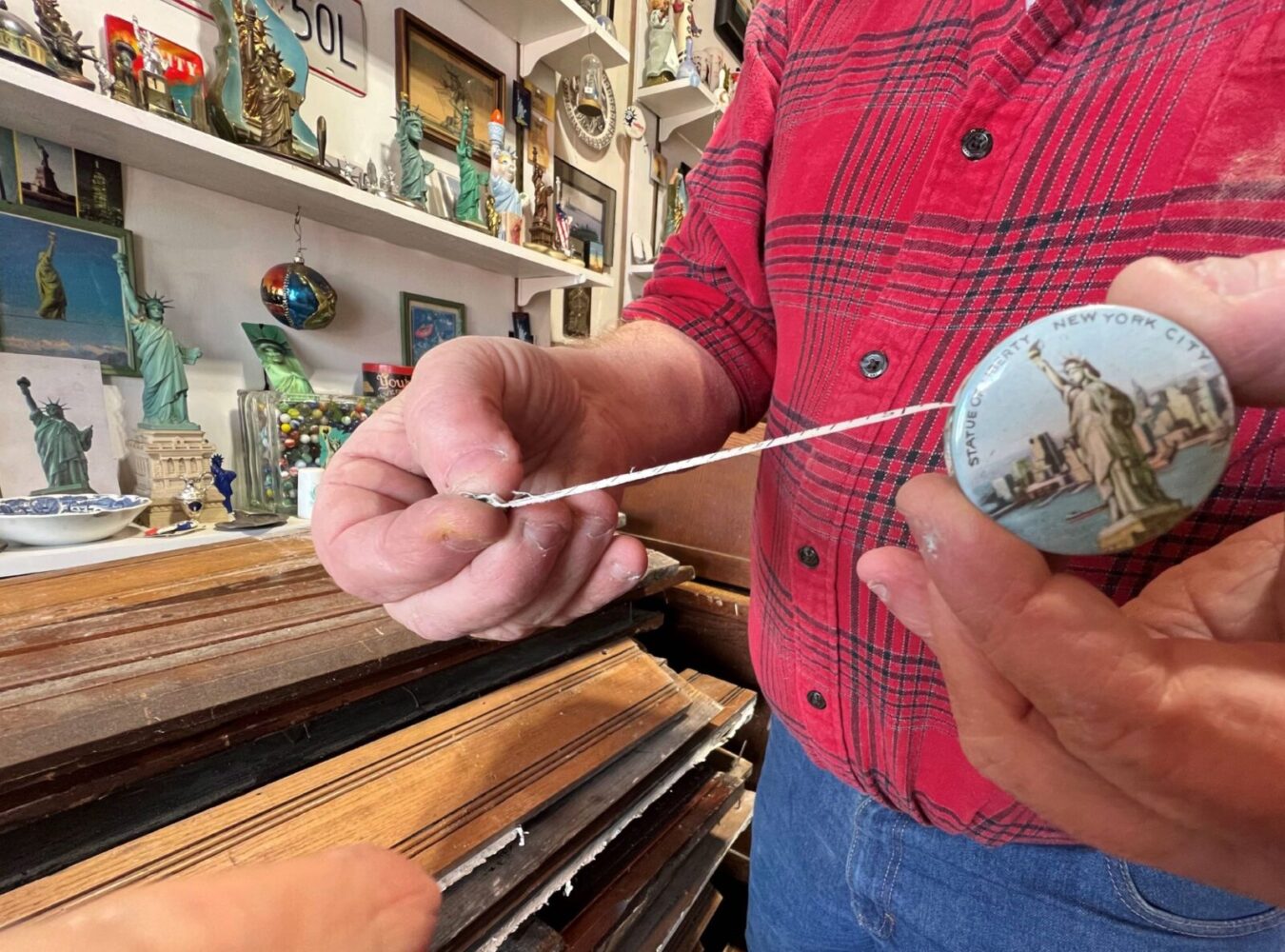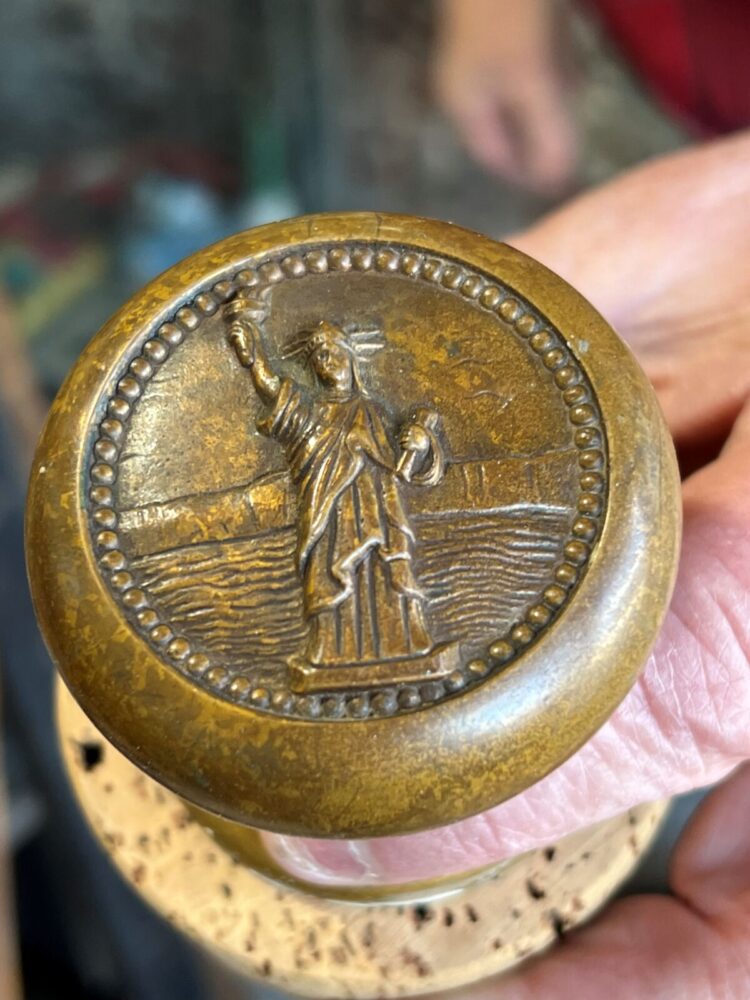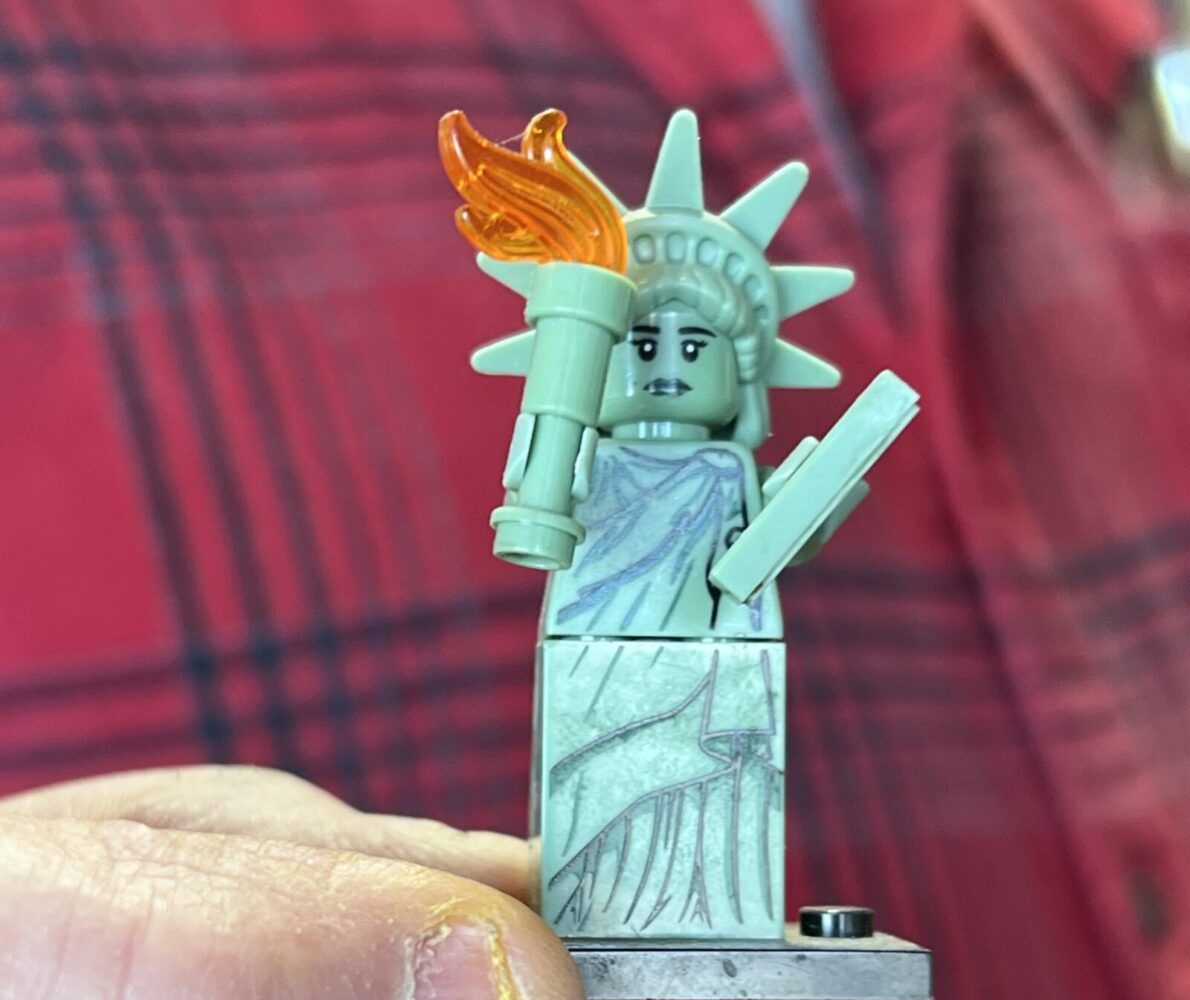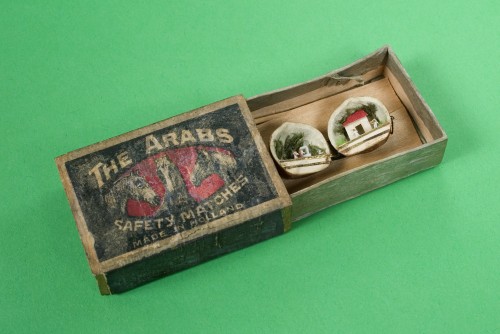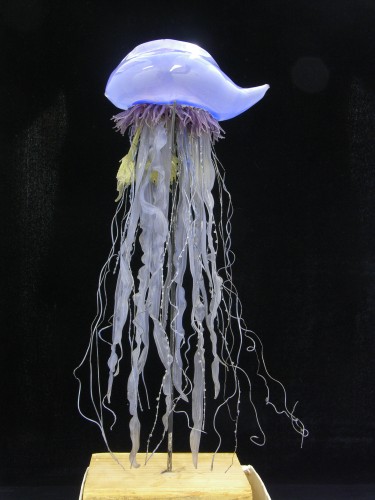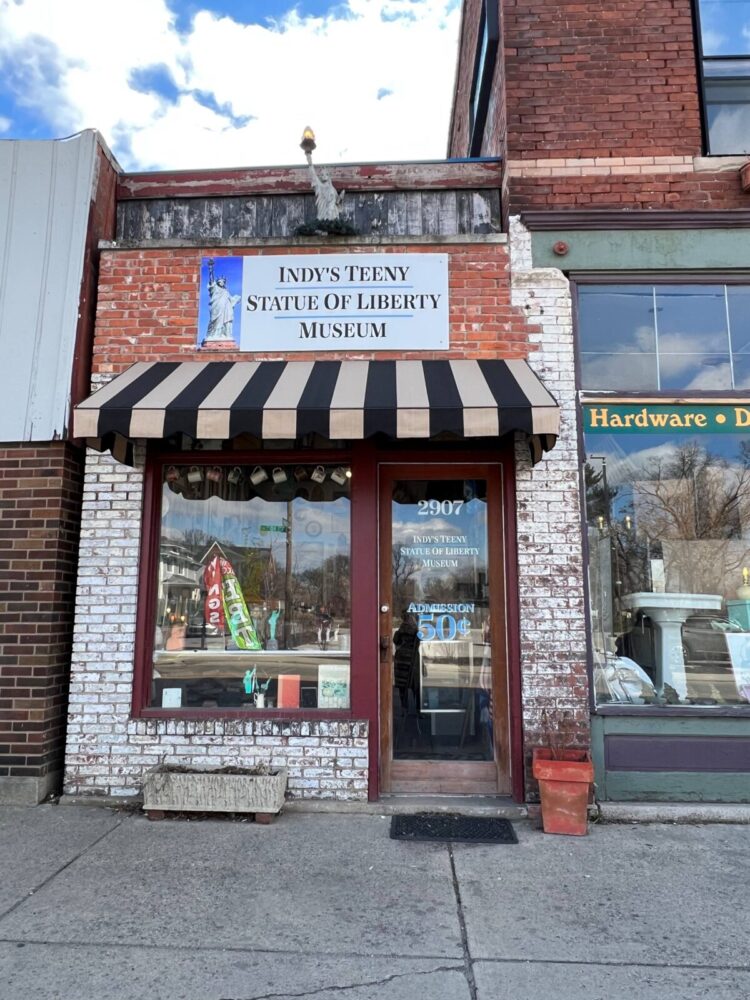
Indy’s Teeny Statue of Liberty Museum, on East Tenth Street in Indianapolis, IND, is home to Tim Harmon’s collection of about 1000 items portraying or bearing the image of the Statue of Liberty.
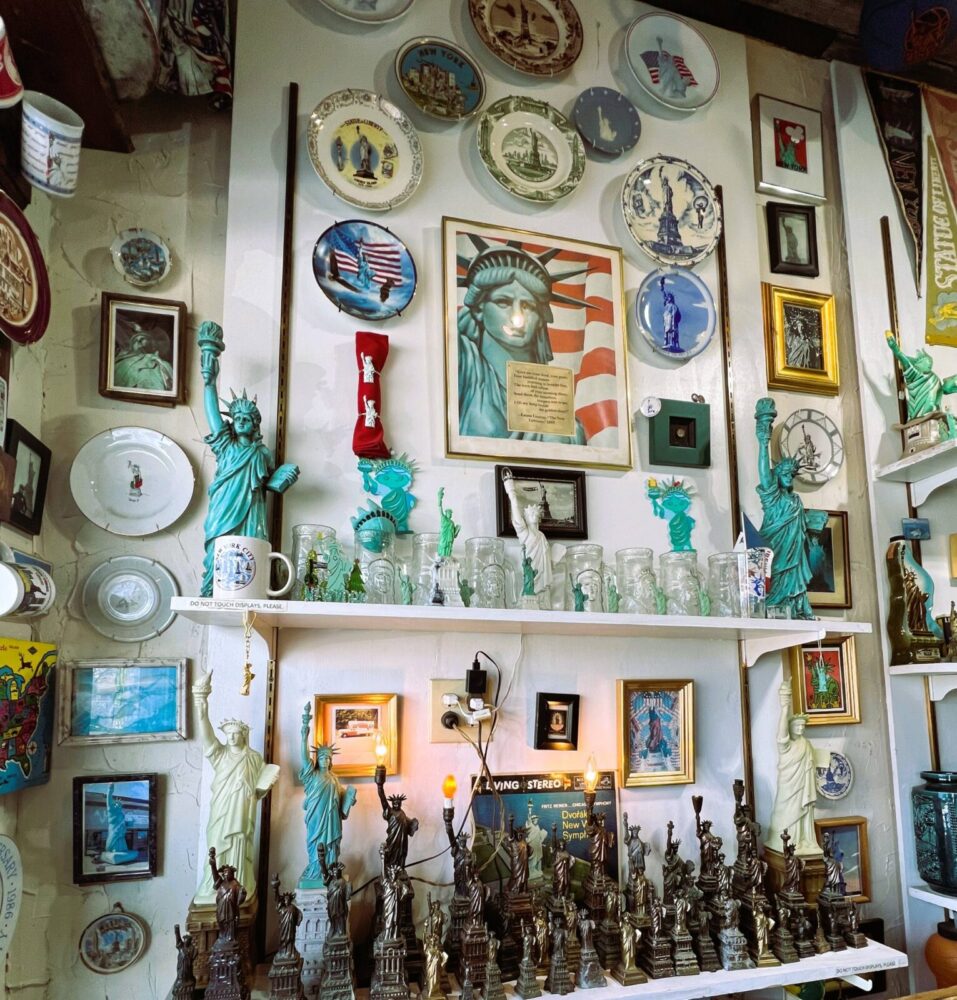
The museum is about 10 feet by 16 feet (hence, “teeny”, says Harmon) and resides in the front room of a building created by enclosing an alley.
Harmon says his collection started innocently with a handful of Statues of Liberties arranged on the back of his toilet tank. “Then there was no reason to stop,” he said. “And when you collect you get a shelf, then you get a couple of shelves, then people start giving you things. And in my case, it was Statues of Liberties.”
And then it was Indy’s Teeny Statue of Liberty Museum.
“The museum’s not patriotic,” says Harmon. “The museum just is what it is. It’s a museum filled with Statues of Liberty.”
Here are some snaps from our tour of Indy’s Teeny Statue of Liberty Museum.
